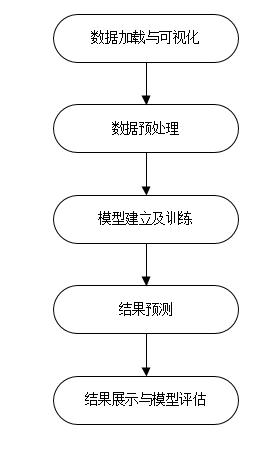Python建立线性回归模型进行房价预测
前期准备多因子房价预测实战流程1.数据加载2.数据可视化3.数据预处理4.模型建立与训练5.模型预测6.模型评估7.房价预测 数据与代码
前期准备
本文使用Jupyter-notebook作为集成开发环境,使用Scikit-learn库搭建线性回归模型进行房价预测,Scikit–learn具有三大优点:
丰富的算法模块易于安装和使用样例丰富教程文档详细官网:https://scikit-learn.org/stable/index.html
多因子房价预测
基于task2_data.csv数据,建立多因子线性回归模型
以面积、人均收入、平均房龄为输入变量,建立多因子模型,评估模型表现预测面积=150, 人均收入=60000, 平均房龄=5的合理房价实战流程
数据加载与可视化数据预处理建立单因子线性回归模型,训练模型评估模型表现,可视化线性回归预测结果流程图为:
1.数据加载
首先加载task2_data.csv数据并展示部分数据,代码如下:
#数据加载import pandas as pdimport numpy as npdata = pd.read_csv('task2_data.csv')data.head(10)2.数据可视化
对数据进行可视化代码如下:
from matplotlib import pyplot as pltfig = plt.figure(figsize=(20,5))fig1 = plt.subplot(131)plt.scatter(data.loc[:,'面积'],data.loc[:,'价格'])plt.title('Price VS Size')fig2 = plt.subplot(132)plt.scatter(data.loc[:,'人均收入'],data.loc[:,'价格'])plt.title('Price VS Income')fig3 = plt.subplot(133)plt.scatter(data.loc[:,'平均房龄'],data.loc[:,'价格'])plt.title('Price VS House_age')plt.show()面积与价格、人均收入与价格、平均房龄与价格散点图如下:
3.数据预处理
将上述加载的数据转化为numpy格式
#X y再次赋值X = data.drop(['价格'],axis=1)y = data.loc[:,'价格']X.head()#数据预处理X = np.array(X)y = np.array(y)y = y.reshape(-1,1)print(X.shape,y.shape)4.模型建立与训练
建立多因子回归模型 并且训练
#建立多因子回归模型 并且训练from sklearn.linear_model import LinearRegressionmodel_multi = LinearRegression()model_multi.fit(X,y)5.模型预测
进行多因子模型的预测
#多因子模型的预测y_predict_multi = model_multi.predict(X)print(y_predict_multi)6.模型评估
通过计算模型准确率与r2_score对模型进行评估
from sklearn.metrics import mean_squared_error,r2_scoreMSE_multi = mean_squared_error(y,y_predict_multi)R2_multi = r2_score(y,y_predict_multi)print(MSE_multi)print(R2_multi)7.房价预测
最后预测面积=150, 人均收入=60000, 平均房龄=5的合理房价
#预测面积=150, 人均收入=60000, 平均房龄=5的合理房价X_test = np.array([[150,60000,5]])y_test_predict = model_multi.predict(X_test)print(y_test_predict)数据与代码
房价数据与完整代码github地址:https://github.com/15009824714/House-price-forecast